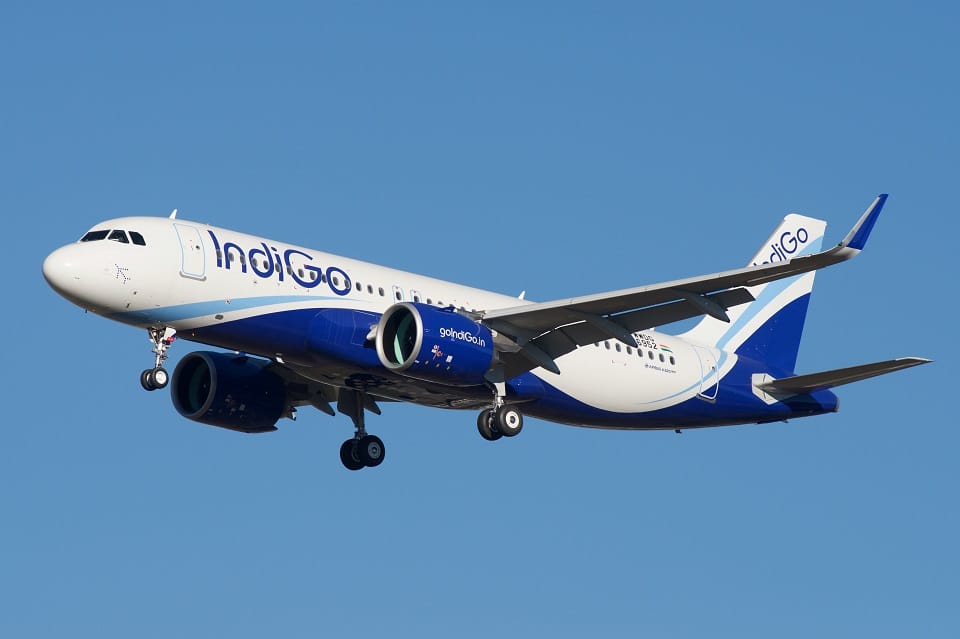Airlines
What is IndiGo ‘Cute Fee’ on Flight Tickets? Airline Explained

A humorous yet thought-provoking exchange on Twitter has recently sparked a broader discussion about the various fees airlines impose on passengers.
The debate was ignited by Shrayansh Singh, an advocate and frequent flyer, who shared a screenshot of his IndiGo Airlines ticket on the platform. His tweet quickly gained traction as he questioned the rationale behind a charge labeled “Cute Fee,” a Rs 50 addition to his ticket.
Singh’s post didn’t stop at the Cute Fee. He also expressed his frustration over other charges on his ticket, such as the “User Development Fee” and “Aviation Security Fee,” questioning their necessity and transparency.
“Dear @IndiGo6E, What is this ‘Cute Fee’? Do you charge users for being cute? Or do you charge because you believe that your aeroplanes are cute?” he inquired, adding, “What is this ‘User Development Fee’? How do you develop me when I travel in your aeroplane? What is this ‘Aviation Security Fee’? Am I not paying taxes to the Government for ensuring my safety when I travel?”
DGCA Penalizes Air India with Rs 90 Lakh Fine Over Non-Qualified Pilots
IndiGo Airlines quickly responded to Singh’s query, aiming to clear up the confusion. They explained that the ‘Cute Fee’ refers to the Common User Terminal Equipment (CUTE) charge.
This fee covers the use of various airport facilities that passengers interact with during their time at the airport, such as escalators, metal detectors, and other essential equipment. However, despite this explanation, Singh’s concerns—and those of many other passengers—remained largely unaddressed.
The conversation has sparked considerable online attention, with a surge of comments and reactions from both supporters and critics of Singh and IndiGo. As the debate unfolds, the indigo flight seat map spotlight remains on issues of transparency and fairness in airline charges.

Airlines
Sanctions & Engine Issues Ground Half of Russia’s A320neo fleet

Russia’s aviation sector, already strained by Western sanctions, faces another setback as nearly half of its Airbus A320neo family aircraft are grounded due to unresolved engine issues.
This development highlights the growing challenges for russia commercial aircraft in maintaining their fleets under the weight of global restrictions and limited access to spare parts.
Out of the 66 Airbus A320neo and A321neo jets in Russia, 34 are now out of service, according to the Kommersant business newspaper. These planes are powered by engines manufactured by Pratt & Whitney, a subsidiary of RTX Corporation.
DAMAC Air: Dubai’s New Luxury Airline Offers Free Flights for Registration
The engines are affected by a previously identified defect in the metal used for certain parts, prompting accelerated inspections and maintenance.
Sanctions have compounded the issue, blocking the supply of essential components from major manufacturers like Boeing and Airbus. Without proper maintenance, experts warn that these aircraft may face decommissioning as early as 2026.
COMAC Unveils Plans for the C929 to Rival Airbus and Boeing
Airlines like S7, which operates a significant portion of these grounded jets, plan to conserve the engines for future use during peak travel seasons. However, reports suggest that over 20 of S7’s Airbus planes have engines that have already reached the end of their operational lifespan. Recently, russia seeks assistance from kazakhstan’s airlines to bolster its domestic flights.
While some A320neo and A321neo planes in Russia are equipped with French-made LEAP engines, which are seen as less problematic, the challenges remain daunting.
The situation underscores the long-term impact of sanctions on Russia’s aviation sector and the increasing difficulties in keeping its modern fleets operational.
-

 Aviation2 months ago
Aviation2 months agoMicrosoft Flight Simulator Raises $3 Million to Bring Back the An-225 Mriya
-

 Airlines2 months ago
Airlines2 months agoQantas Engineers Stage Walkout Over Cost of Living Concerns
-

 Airlines2 months ago
Airlines2 months agoQatar Citizens Can Travel to the United States Without a Visa
-

 Aviation2 months ago
Aviation2 months agoQatar Airways bans these new Electronic Devices on plane
-

 Airlines2 months ago
Airlines2 months agoJapan Airlines Rolls Out Free Domestic Flights to International Passengers
-

 Defence2 months ago
Defence2 months agoWhich Country Has the Largest Fleet of Fighter Aircraft?
-

 Airport2 months ago
Airport2 months agoWestern Sydney Airport Welcomes Its First Plane After 6 Years of construction
-

 Aviation2 months ago
Aviation2 months agoDid you know ? Once Boeing 747 carried 1088 passenger in 1991








